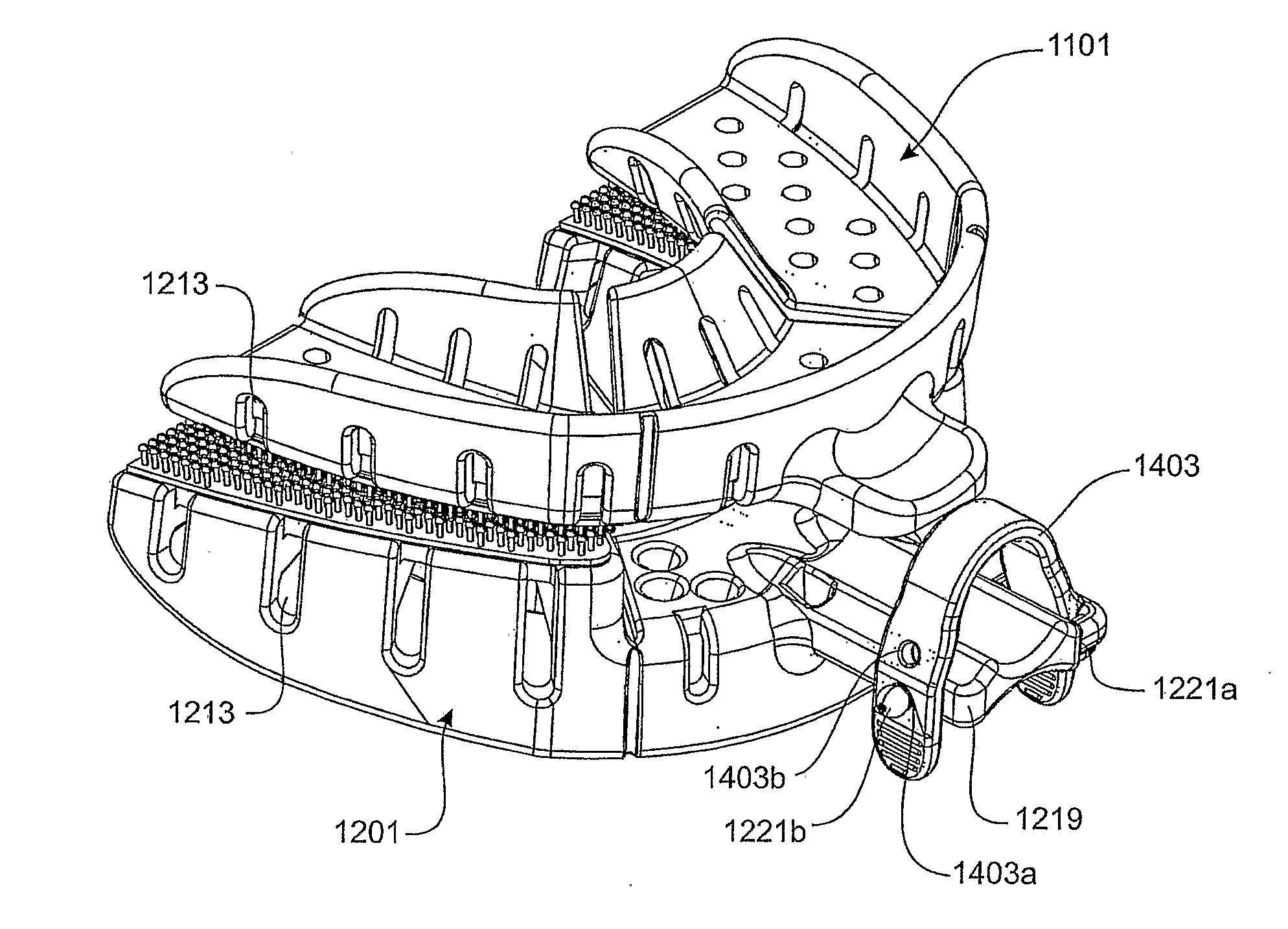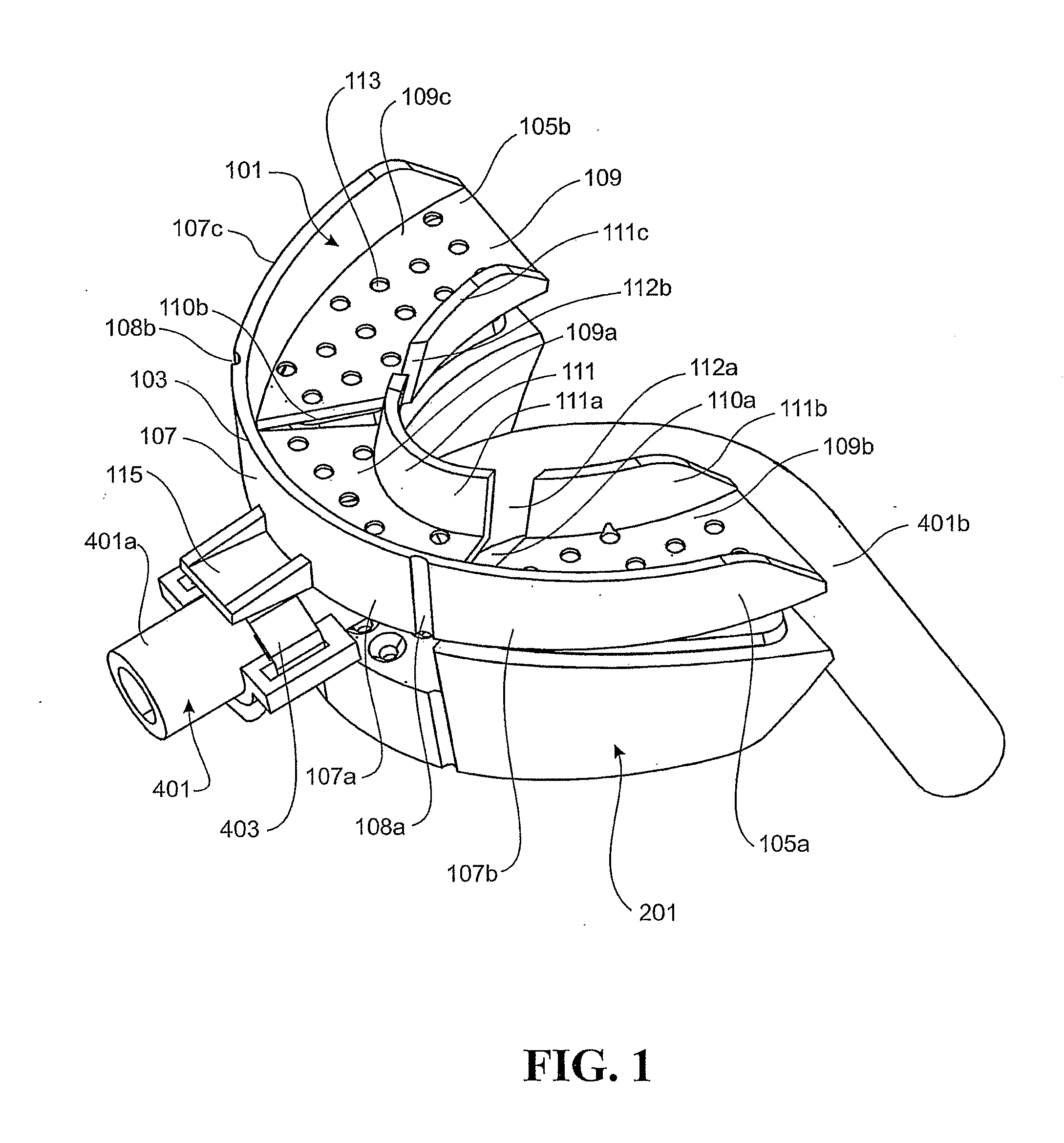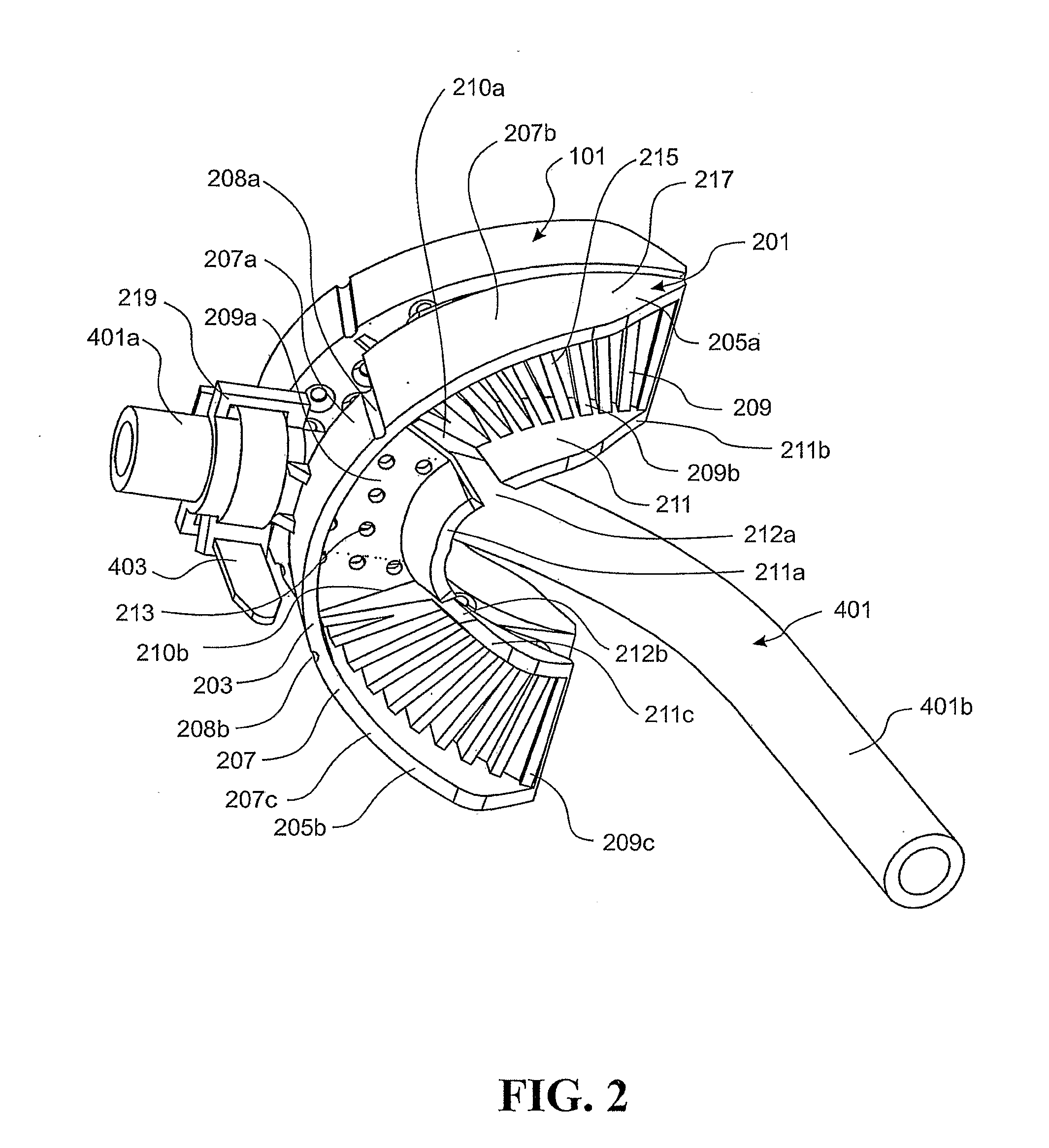Furthermore, due to the current design of combat body armour offering more protection against
torso injuries, more soldiers are surviving to have facial injuries treated resulting in a proportional increase in numbers of maxillofacial procedures.
Due to the fractures, the subject may experience significant bleeding and
acute pain as the unstable fracture segments are able to move against each other.
Furthermore, the subject may experience difficulties in
swallowing, speaking, and controlling secretions.
If the anterior mandible is severely fractured and unstable, potentially life-threatening acute
airway obstruction may occur as the tongue is able to fall backwards and block the
airway posteriorly.
Unstable mandible fractures may also make jaw positioning for
airway management—such as
chin lift and jaw thrust—more difficult.
The use of a face
mask for bag-masking techniques in airway
resuscitation, is also compromised with unstable anterior facial injuries or if significant portions of the jaw are missing altogether.
This technique is difficult requiring high levels of advanced medical and dental training, potentially hazardous due to sharps injuries to the person performing the wiring and does not allow the jaws to be opened rapidly in cases of
airway obstruction.
The technique is also
time consuming (both for
insertion and removal), and requires the subject to be at least locally anaesthetised for both the wiring and the removal procedures.
The wires may snap, which would require additional time and suffering for the subject to be re-wired.
Additionally, once the jaws are wired closed, the subject may be prevented from clearing respiratory secretions or vomit from his or her airway, which can compromise the subject's airway and potentially cause death from aspiration.
If the subject is obtunded or rendered unconscious, the airway compromise may potentially lead to fatal consequences.
Some awake subjects may also experience a degree of
claustrophobia due to the jaws being wired together.
These techniques are generally confined to well equipped hospitals, and do not lend themselves to pre-
hospital treatment in the field (such as the
battlefield or accident site for example), where services are limited or non-existent and that may rely on medical assistance from personnel who do not have the necessary training for performing wiring techniques.
In each case, the device is
time consuming to attach to the subject, and in the case of wiring, would require the subject to be anaesthetised for attachment and removal.
Additionally, the subject could bite down on the splint with their top teeth, which could compromise the subject's ability to breathe through their mouth.
Due to the use of metallic bands, there is still the potential for sharps injuries to occur.
Again, this device is
time consuming to install and could not be used in a field environment with inadequate lighting and equipment as the
cement must be applied to a dry surface.
Additionally, once installed, the upper and lower jaws are closed together, which may again
pose the same difficulties as previously mentioned regarding potential airway issues and aspiration risk.
However, as the flexible bands need to be wrapped around individual teeth, again the device is time consuming to install.
Once installed, the upper and lower jaws are closed together, which may again
pose the same difficulties as previously mentioned regarding potential airway issues and aspiration risk.
Additionally, the device is time consuming to remove, requiring the bands to be removed from the individual teeth.
Migration of the
endotracheal tube deeper into the airway Poses significant dangers due to the endotracheal tube potentially passing into a
main stem bronchus beyond the carina, which is the point of bifurcation of the lower airways into each
lung, resulting in only one
lung being ventilated with resulting morbidity.
This technique is impractical if the subject is suffering from significant facial
soft tissue injuries such as facial burns or multiple lacerations for example.
Additionally, when an endotracheal tube is positioned in such a manner, there is nothing to prevent a subject from
biting down on the-tube.
Biting down on the tube could prevent adequate ventilation, which could potentially result in death.
In one embodiment of the device, there is nothing to prevent a subject from
biting up on the tube with their lower front teeth.
The tube is unprotected and potentially can be crushed, thereby preventing adequate ventilation which could potentially result in death.
This would also lead to the maxillary fracture opening anteriorly, potentially causing an increase in pain and bleeding and decreasing the space between the jaws and
dentition anteriorly as the maxilla tips downwards at the front.
Due to the configuration of that device, the device can only be used on the upper jaw, as the portion that covers the roof of the mouth would interfere with the tongue if the device was used on the bottom jaw.
It is undesirable to fix an endotracheal tube to the upper jaw, as the endotracheal tube has a pre-fabricated downward curve which facilitates easier placement due to an arc of
insertion into the airway via laryngoscopy.
 Login to View More
Login to View More  Login to View More
Login to View More 


